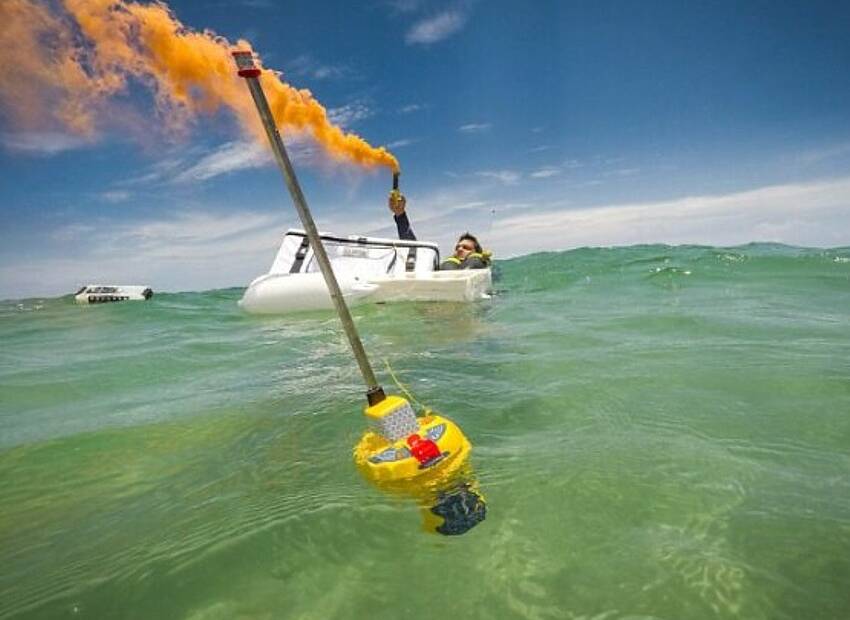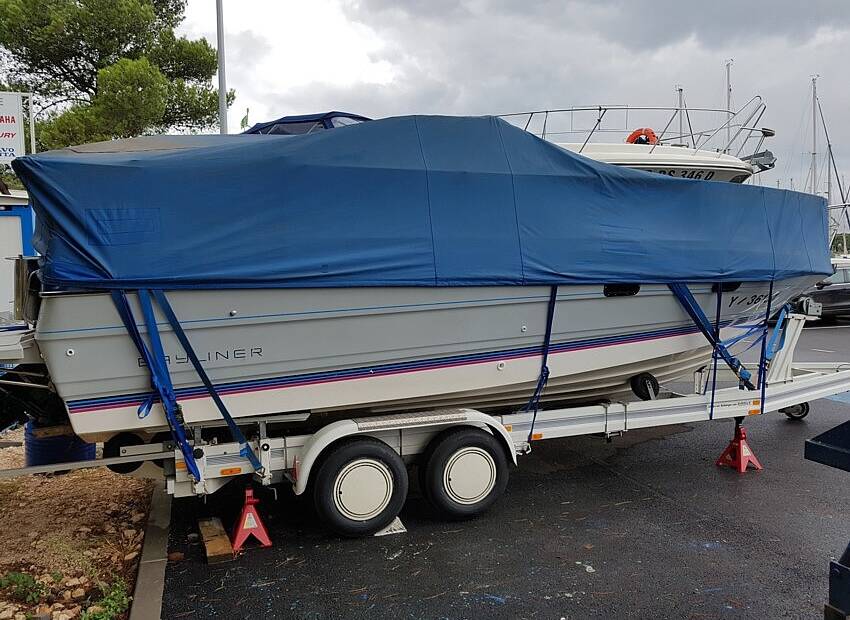Pass along these seven easy tips to your sailing crew, partner or spouse. Think all hands aboard know or follow these? Check out any fuel dock in any marina and you'll see one or more violated time and again. Keep your crew safe and sound. Spend the five minutes now to review, print out, and pass along these sea-tested tips today!
1. Button Up Your Boat to Keep Vapors Out
Close all hatches, ports and vents. This keeps fuel vapors outside of the boat and prevents vapor accumulation in the bilge area. Run mechanical blowers (if equipped) for at least five minutes to clear the engine space of fumes.
2. Keep a Fire Extinguisher Ready on Deck
Remove a fire extinguisher from the bulkhead mounting brackets. Place it in a horizontal position onto the deck outside in the cockpit area. This position will prevent the extinguisher from falling over in case of boat wakes that rock the boat. Now you have an extinguisher near the fueling operation, ready to use in an instant.
3. Cover the Downhill Scupper Drains
Use a few rags, pads, or diapers to block off cockpit scuppers or drains in case you get fuel overflow or the fuel splashes or spills on deck. The fuel will flow with gravity along the deck to drains or scuppers. Block off the scuppers to keep fuel on the boat and out of the waters of the harbor.
4. Keep Contact between Nozzle and Fill
Wrap a rag around the nozzle or fuel fill opening before you insert the nozzle. This will help catch fuel drips or spills. Insert the nozzle and maintain contact with the fuel fill opening. This will prevent the possibility of a spark from static electricity.
5. Keep an Eye on the Fuel Gauge
Realize that some tanks are shaped somewhat like a "V"--narrower near the bottom and wider near the top. That means that when you begin to fuel, the gauge could show a rapid fill. Then, about halfway up to the top of the tank, the fuel gauge will slow to a crawl. This can catch you by surprise and the tank could overfill. Slow down when your gauge reads "half full". Ask your crew or partner to hold a diaper just beneath the fuel vent in case of overflow. Fill up the tank to about 90% capacity. This allows a bit of space inside the tank for expansion.
6. Tighten the Fill Cap
Turn the fill cap over and check the gasket. Replace the gasket if it's cracked. Otherwise, water can intrude into your tank and cause havoc with your engine. Tighten the cap onto the fuel fill opening for a positive seal to keep moisture, rain water, and sea spray out. Check all along the deck for drips and spills and wipe it up right away with your rags, absorbent pads, or diapers. Also, check on both sides of the hull for a sheen in the water, in particular on the same side as the fuel vent.
7. Ventilate Before You Start the Engine!
Open up all hatches, ports, and vents for at least five minutes to get rid of any fuel vapors present below decks. Run the blowers (if equipped) in the engine space for five minutes. No matter how busy the fuel dock may be--even with boats waiting to come alongside--make sure to do this final step to prevent explosion. Take five and stay alive!
Click Here to Discover the Benefits of Skippertips Membership
Captain John
Author of "Seamanship Secrets"
Website: http://SkipperTips.com
"Be the Skipper You Want to Be!"
Email: captainjohn@skippertips.com






















